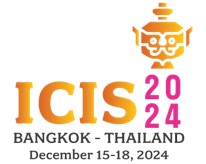Loading...
Paper Number
1327
Paper Type
Short
Abstract
In the realm of disaster management, the categorization of crisis messages plays a crucial role in facilitating rapid response efforts. Traditionally, this categorization task has been undertaken by online crowd volunteers and on-site responders, who classify "requests for help" (RFH) messages submitted during crises. However, the integration of LLMs into smart mapping systems in the context of disaster management presents an opportunity to automate the categorization of crisis messages. This paper proposes design principles for disaster response by empirically testing LLM tools for the purpose of categorizing RFHs. The use-case of Ushahidi platform during the 2010 Haiti Earthquake is examined to illustrate the potential for Large Language Models (LLMs) in automating the categorization of RFHs. Ushahidi is a platform where RFH crisis messages were submitted from mobile devices of on-site victims. The goal is to help automate the categorization of crisis messages, hence ultimately bolstering on-site response and recovery efforts.
Recommended Citation
Patel, Hrishitva; Valecha, Rohit; Vishwamitra, Nishant; and Rao, H Raghav, "Automating Information Categorization using LLMs in Crisis Mapping Platforms: An Examination of “Requests for Help” during the 2010 Haiti Earthquake" (2024). ICIS 2024 Proceedings. 1.
https://aisel.aisnet.org/icis2024/isdesign/isdesign/1
Automating Information Categorization using LLMs in Crisis Mapping Platforms: An Examination of “Requests for Help” during the 2010 Haiti Earthquake
In the realm of disaster management, the categorization of crisis messages plays a crucial role in facilitating rapid response efforts. Traditionally, this categorization task has been undertaken by online crowd volunteers and on-site responders, who classify "requests for help" (RFH) messages submitted during crises. However, the integration of LLMs into smart mapping systems in the context of disaster management presents an opportunity to automate the categorization of crisis messages. This paper proposes design principles for disaster response by empirically testing LLM tools for the purpose of categorizing RFHs. The use-case of Ushahidi platform during the 2010 Haiti Earthquake is examined to illustrate the potential for Large Language Models (LLMs) in automating the categorization of RFHs. Ushahidi is a platform where RFH crisis messages were submitted from mobile devices of on-site victims. The goal is to help automate the categorization of crisis messages, hence ultimately bolstering on-site response and recovery efforts.
When commenting on articles, please be friendly, welcoming, respectful and abide by the AIS eLibrary Discussion Thread Code of Conduct posted here.



Comments
11-PM